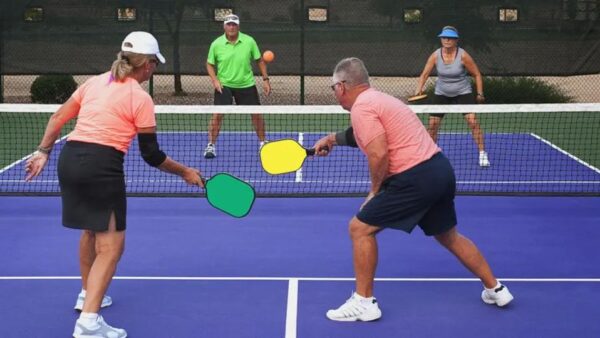
Pickleball, the rapidly growing sport, combines elements of tennis, badminton, and ping pong. While it’s a fantastic way to stay active and have fun, pickleball injuries are something we have to be mindful of.
From strained muscles to joint issues, pickleball players are not immune to the potential pitfalls of physical activity. However, with the right knowledge and support, these injuries can be prevented and managed effectively.
In this article, we’ll explore common pickleball injuries and how a physical therapist can play a crucial role in both prevention and rehabilitation.
Understanding Pickleball Injuries
Pickleball is a sport that demands quick movements, sudden changes in direction, and repetitive motions. This puts strain on various parts of the body, which can lead to common pickleball injuries.
Common injuries among pickleball players include:
- Sprains and strains: Due to the dynamic nature of the game, players are susceptible to sprained ankles, strained muscles, and ligament injuries.
- Tennis elbow: Similar to tennis players, pickleball players may experience pain and inflammation in the tendons of the elbow due to overuse.
- Shoulder injuries: The overhead swings involved in serving and smashing can lead to shoulder impingement, rotator cuff strains, and tendonitis.
- Knee injuries: The constant bending and pivoting motions put stress on the knees, leading to issues like patellar tendonitis and meniscus tears.
How a Physical Therapist Can Help:
- Injury Prevention: A physical therapist can assess your movement patterns and identify potential areas of weakness. Weakness can turn into imbalances that could lead to injury. By designing a tailored exercise program, we can help improve strength, flexibility, and stability, reducing the risk of injury on the court.
- Rehabilitation: In the unfortunate event of an injury, a physical therapist is your ally in the journey back to full health. Through targeted exercises and manual therapy we can promote healing, reduce pain, and restore function.
- Prevent Recurrence: If you have sustained an injury and have been through Physical Therapy, it is important to keep you healthy. Your physical therapist can give you exercise and advice to keep you from re-injury.
- Technique Refinement: Proper technique is essential in pickleball to minimize strain on the body and maximize performance. A physical therapist with expertise in sports biomechanics can provide valuable insights and guidance to help you refine your strokes and movements, reducing the risk of overuse injuries.
- Return to Play Protocol: Following an injury, returning to the court too soon can exacerbate the problem and delay recovery. A physical therapist will develop a structured return to play protocol, gradually reintroducing activities and monitoring progress to ensure a safe and successful comeback.
Conclusion
Pickleball injuries are a reality for players of all levels, but they don’t have to sideline you indefinitely. By working with a skilled physical therapist, you can take proactive steps to prevent injuries, address them promptly if they occur, and ultimately enjoy pickleball for years to come.
Whether you’re looking to optimize your performance or recover from an injury, don’t underestimate the value of incorporating physical therapy into your pickleball journey.
Your body will thank you for it on and off the court.
Did you know you have Direct Access* to Physical Therapy? No referral, no problem!
Looking to join a pickleball league? Check out this Adult Pickleball League from our friends at FXA

















